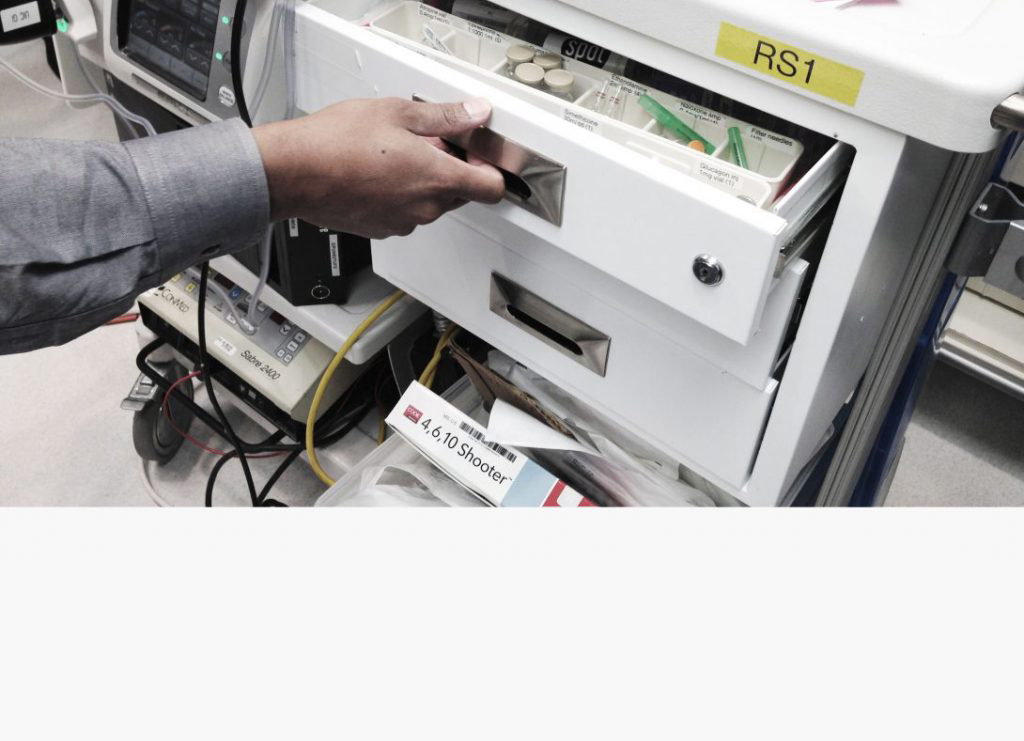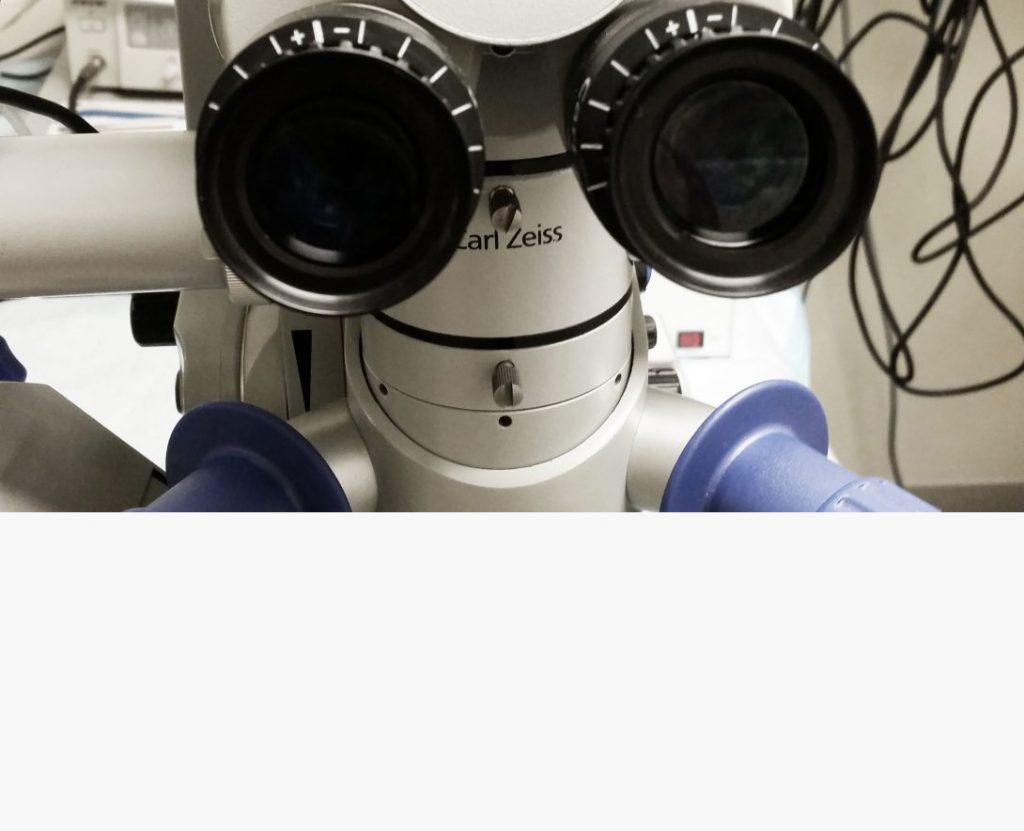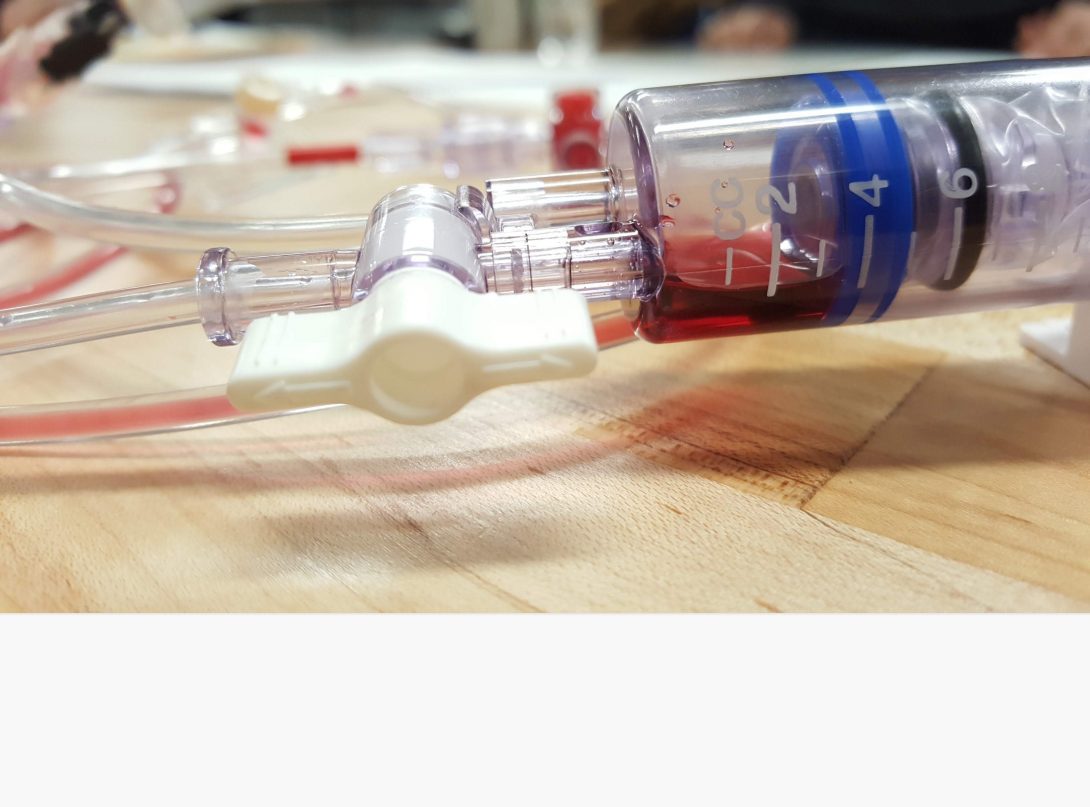Our projects come from needs identified by University of Illinois at Chicago clinicians, as well as user-centered research.
How might we create a more compact and portable endoscopy system? Heading link

Objective
In interviewing and observing physicians and nurses who use portable endoscopy carts, it is clear that transport and setup time is cumbersome and inefficient. The extended travel and set up time of a mobile endoscopy system can jeopardize patient health.
Problem Statement
Reducing the physical form and weight as well as optimizing usage protocol will increase patient survivability and decrease physician fatigue.
Value Proposition
If overall cart transportation and set up times could be reduced by 20-30 minutes, project sponsor Dr. Nannegari believes that patient outcomes could be measurably improved. This reduction could also decrease physician fatigue.
MAD Lab Process Phase Employed
Discover: This project was completed after the research phase.
How can we reduce the risk of compromising donor eye tissue during partial corneal transplant? Heading link

Objective
The objective of this project to create a tool, or tools, that reduces the risk of compromising the donor eye tissue during preparation for the Descemet’s membrane endothelial keratoplasty (DMEK) procedure, as well as reduce the time and reliance on experience for positive outcomes.
Problem Statement
The current methods and tools used to prepare the donor tissue for DMEK surgery are time-consuming. These tools have a steep learning curve for users and can lead to tears in the donor tissue that we believe could be prevented by different tools and/or methods.
Value Proposition
By reducing the complexity and time required to prepare the donor tissue for the DMEK procedure, there will be a significant payoff in the reduced number of eyes wasted and people-hours required for each procedure.
MAD Lab Process Phase Employed
Deliver: A 3D printed prototype (not to scale) was delivered along with the final report.
How can we accurately measure patient temperature without introducing infection risk? Heading link

Objective
Current temperature monitoring systems, such as surface, esophageal, or bladder measurements, have various shortcomings such as difficulty in placement, lack of accuracy or causing infection. An improved method to monitor core temperature with a high degree of accuracy that doesn’t increase the risk of infection is needed for monitoring critically ill patients.
Problem Statement
Develop a rapid and accurate means of continually measuring the core temperature of critically ill patients.
Value Proposition
Our device will provide accurate patient temperature readings to medical professionals without introducing additional infection risk.
MAD Lab Process Phase Employed
Deliver: A minimum viable prototype delivered with preliminary testing data and the final report.